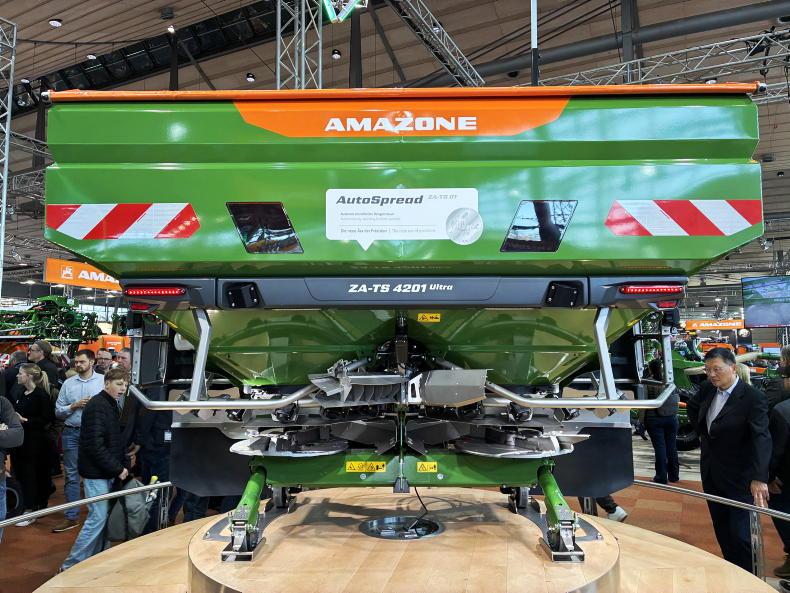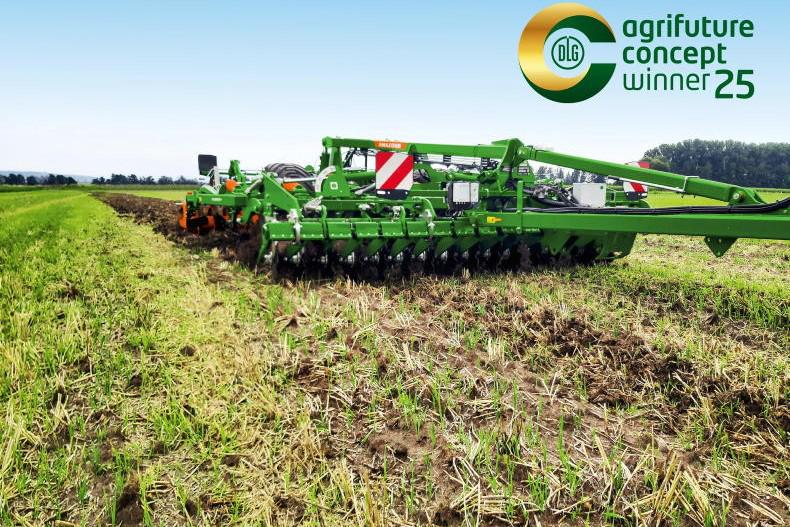Machinery company Amazone was founded in 1883 by Heinrich Dreyer. According to historical accounts, the first machines produced were grain-cleaning machines followed by horse and tractor-drawn ploughs and potato sorters.
In 1915, the family-run company produced its first fertiliser spreader after a range of other equipment had been manufactured by the Dreyer family, who still retain full ownership of Amazone to this day.
Even before 1915, Dreyer was exporting machinery around the world. As early as 1906, the first grain-cleaning machines were sold in Valparaíso, Chile.
The first potato harvesters were introduced to the market in 1942 and, seven years later, seed drills were launched.
Probably the most important machine to Ireland and perhaps Amazone was introduced in the 1960s, the twin-disc ZA fertiliser spreader.
Alongside this machine, the D4 seed drill was very successful, which helped Amazone reach market leadership.
The company entered into tillage in 1967 and developed the first Amazone manufactured PTO driven tillage equipment.
The harrow and rotary cultivator were also included into the product range.
After German reunification, a range of cultivators were added to the product portfolio for the varying range of soils into which the machines were put to work.
Today, Amazone manufactures at five different sites, including at Samara in Russia.
Amatechnica – vintage display
As part of the recent Amatechnica field day, Amazone had a wide range of vintage equipment on display. Visitors got to step back in time to see just a sample of the machines that were built by the company over the years. A dedicated museum, formerly a stall for milking cows, set in the German countryside was where the machines were displayed.
A Lanz-Bulldog tractor was also running which towed a ground-driven twin-disc early model fertiliser spreader. The basic design of this machine went on to be the foundations of one of the most important machines the company now builds.
Read more
Amazone has the world at its feet
Machinery company Amazone was founded in 1883 by Heinrich Dreyer. According to historical accounts, the first machines produced were grain-cleaning machines followed by horse and tractor-drawn ploughs and potato sorters.
In 1915, the family-run company produced its first fertiliser spreader after a range of other equipment had been manufactured by the Dreyer family, who still retain full ownership of Amazone to this day.
Even before 1915, Dreyer was exporting machinery around the world. As early as 1906, the first grain-cleaning machines were sold in Valparaíso, Chile.
The first potato harvesters were introduced to the market in 1942 and, seven years later, seed drills were launched.
Probably the most important machine to Ireland and perhaps Amazone was introduced in the 1960s, the twin-disc ZA fertiliser spreader.
Alongside this machine, the D4 seed drill was very successful, which helped Amazone reach market leadership.
The company entered into tillage in 1967 and developed the first Amazone manufactured PTO driven tillage equipment.
The harrow and rotary cultivator were also included into the product range.
After German reunification, a range of cultivators were added to the product portfolio for the varying range of soils into which the machines were put to work.
Today, Amazone manufactures at five different sites, including at Samara in Russia.
Amatechnica – vintage display
As part of the recent Amatechnica field day, Amazone had a wide range of vintage equipment on display. Visitors got to step back in time to see just a sample of the machines that were built by the company over the years. A dedicated museum, formerly a stall for milking cows, set in the German countryside was where the machines were displayed.
A Lanz-Bulldog tractor was also running which towed a ground-driven twin-disc early model fertiliser spreader. The basic design of this machine went on to be the foundations of one of the most important machines the company now builds.
Read more
Amazone has the world at its feet

















SHARING OPTIONS